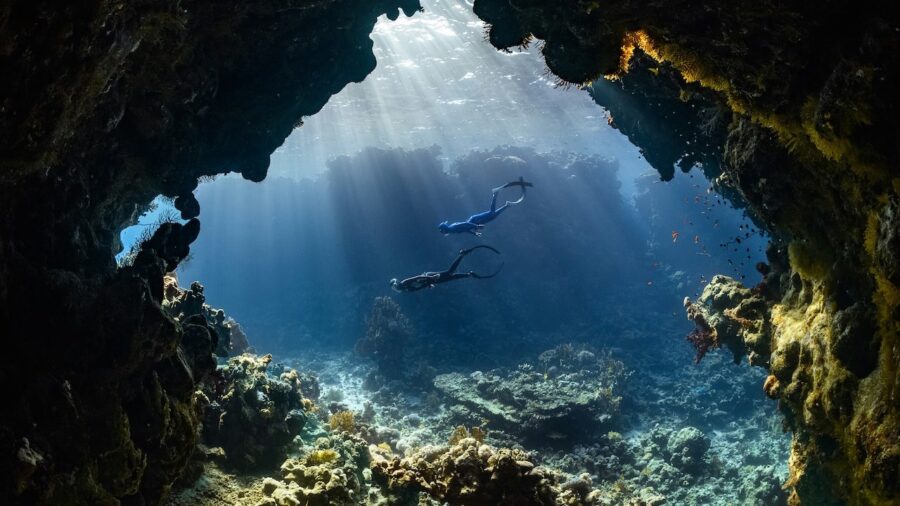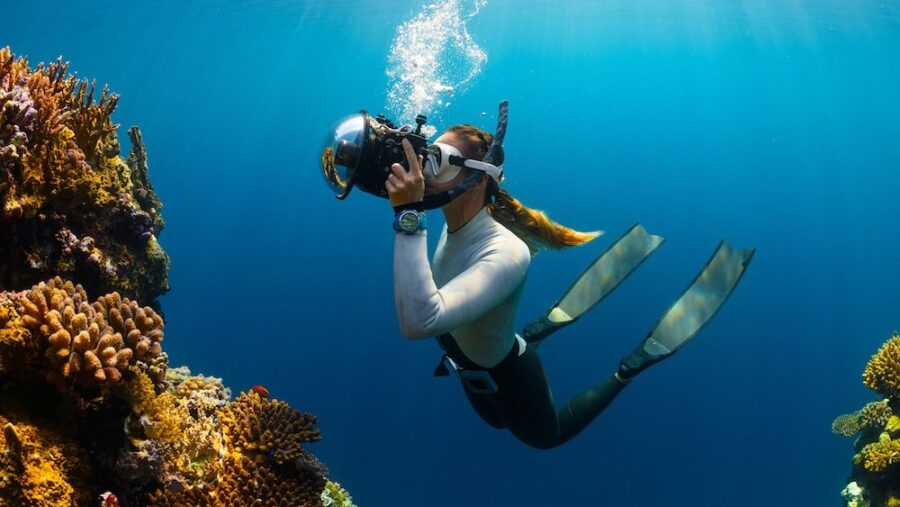Scuba Gear Lizard Can Breathe Underwater

Lizards residing in the Costa Rican Rainforest, known as diving anoles, can store oxygen as they dive and breathe underwater, just like scuba divers. These scuba lizards trap a little air bubble on their heads that covers their nostrils, allowing them to breathe while hiding from predators underwater. The lizards can stay submerged for several minutes, giving them a survival edge and making them unique in the world of biology.
What’s really fascinating about these scuba diving lizards is that multiple species in the Anolius genus exhibit the behavior. All of the lizards that exhibit the diving behavior are from the same area, and they’re all aquatic, living their lives on land as well as water.
The only other animals that exhibit underwater breathing behavior like this are arachnids and insects, but scuba lizards are the only vertebrates to exhibit this ability.
Since anole lizards aren’t very fast, their main defense against predators is their camouflaging ability. When that fails them, hiding underwater is the scuba lizard’s best defense. This strategy of waiting out their would-be predators is a mysterious behavior that researchers are endeavoring to find the origins of.
Hiding underwater is the scuba lizard’s best defense.
To get a better look at the scuba lizards’ bubble-breathing, Dr. Lindsey Swierk, a researcher from Binghamton University in New York, captured several A aquaticus anoles. Working at the Costa Rica Las Cruces Biological Station, she placed the scuba lizards in a clear tank to observe their bubble breathing. One group of lizards was dabbed with an emollient to prevent them from keeping air bubbles on their snouts, and the other was left as they arrived.
The lizards in the control group, who weren’t treated with emollient, all had large air bubbles they used to breathe underwater while the ones who were dabbed produced smaller air bubbles or none at all.
The scuba lizards who had emollient on their snouts couldn’t get their bubbles to stick, so they couldn’t perform their regular scuba behavior. All of the lizards used their throat muscles to pump oxygen into their lungs.
On average, the scuba lizards could stay submerged for three and a half minutes
The bubbleless lizards had to resurface a little more than a minute sooner than the scuba lizards did. On average, the scuba lizards could stay submerged for three and a half minutes, and the non-bubble lizards could stay under for just short of two and a half minutes.
This bubble breathing technique is an advantage as the diving anoles can evade predators for a longer period of time.

The downside of diving for lizards is that it can cause their body temperature to drop. The chilly water the scuba lizards are hiding in can cool the animals down faster than if they were on the surface. This chilling effect can make lizards slower when they emerge from the water and less able to run from predators.
Exactly how the lizards are able to hold onto their air bubbles and how this ability developed across multiple species is still not clear. Researchers are hoping to put together a better explanation for the unique behavior of the scuba lizards by studying video and statistics from their recent experiments.
They have posited that oxygen could potentially diffuse through the bubble, allowing the lizards to breathe for longer through the bubble than was previously assumed.











